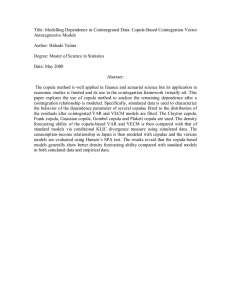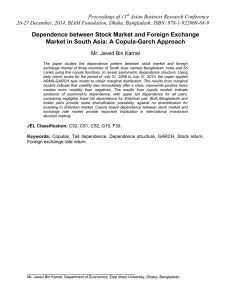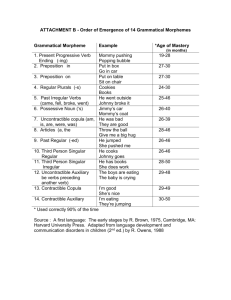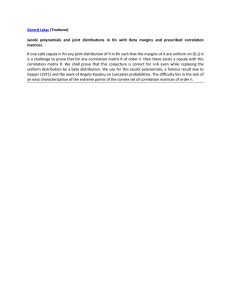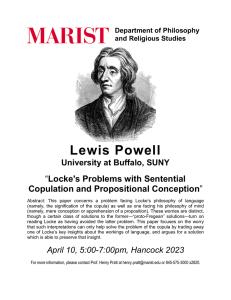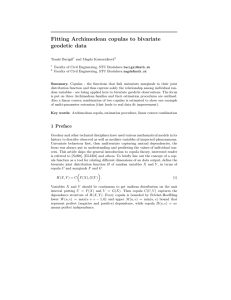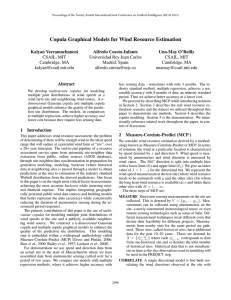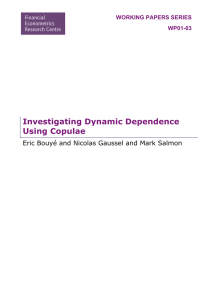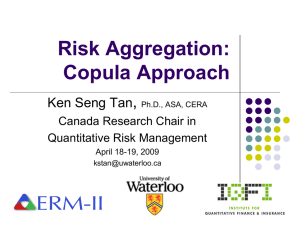DEPENDENCE MODELLING IN THE FRENCH MONKFISH MARKET: A COPULA FUNCTIONS APPROACH
advertisement
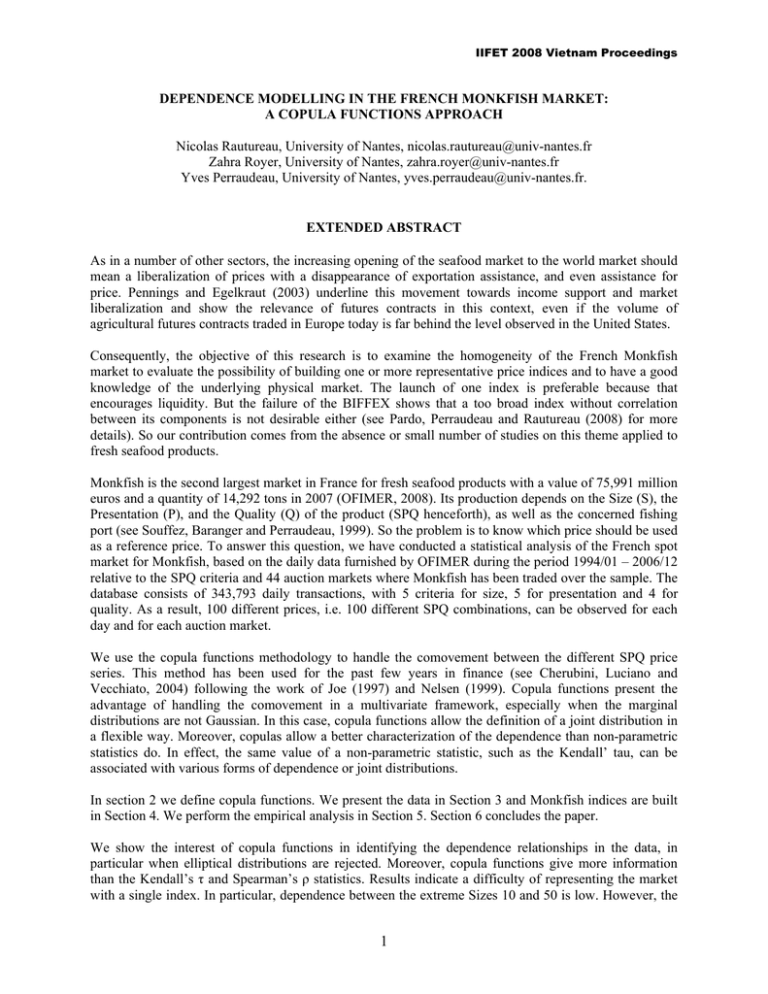
IIFET 2008 Vietnam Proceedings DEPENDENCE MODELLING IN THE FRENCH MONKFISH MARKET: A COPULA FUNCTIONS APPROACH Nicolas Rautureau, University of Nantes, nicolas.rautureau@univ-nantes.fr Zahra Royer, University of Nantes, zahra.royer@univ-nantes.fr Yves Perraudeau, University of Nantes, yves.perraudeau@univ-nantes.fr. EXTENDED ABSTRACT As in a number of other sectors, the increasing opening of the seafood market to the world market should mean a liberalization of prices with a disappearance of exportation assistance, and even assistance for price. Pennings and Egelkraut (2003) underline this movement towards income support and market liberalization and show the relevance of futures contracts in this context, even if the volume of agricultural futures contracts traded in Europe today is far behind the level observed in the United States. Consequently, the objective of this research is to examine the homogeneity of the French Monkfish market to evaluate the possibility of building one or more representative price indices and to have a good knowledge of the underlying physical market. The launch of one index is preferable because that encourages liquidity. But the failure of the BIFFEX shows that a too broad index without correlation between its components is not desirable either (see Pardo, Perraudeau and Rautureau (2008) for more details). So our contribution comes from the absence or small number of studies on this theme applied to fresh seafood products. Monkfish is the second largest market in France for fresh seafood products with a value of 75,991 million euros and a quantity of 14,292 tons in 2007 (OFIMER, 2008). Its production depends on the Size (S), the Presentation (P), and the Quality (Q) of the product (SPQ henceforth), as well as the concerned fishing port (see Souffez, Baranger and Perraudeau, 1999). So the problem is to know which price should be used as a reference price. To answer this question, we have conducted a statistical analysis of the French spot market for Monkfish, based on the daily data furnished by OFIMER during the period 1994/01 – 2006/12 relative to the SPQ criteria and 44 auction markets where Monkfish has been traded over the sample. The database consists of 343,793 daily transactions, with 5 criteria for size, 5 for presentation and 4 for quality. As a result, 100 different prices, i.e. 100 different SPQ combinations, can be observed for each day and for each auction market. We use the copula functions methodology to handle the comovement between the different SPQ price series. This method has been used for the past few years in finance (see Cherubini, Luciano and Vecchiato, 2004) following the work of Joe (1997) and Nelsen (1999). Copula functions present the advantage of handling the comovement in a multivariate framework, especially when the marginal distributions are not Gaussian. In this case, copula functions allow the definition of a joint distribution in a flexible way. Moreover, copulas allow a better characterization of the dependence than non-parametric statistics do. In effect, the same value of a non-parametric statistic, such as the Kendall’ tau, can be associated with various forms of dependence or joint distributions. In section 2 we define copula functions. We present the data in Section 3 and Monkfish indices are built in Section 4. We perform the empirical analysis in Section 5. Section 6 concludes the paper. We show the interest of copula functions in identifying the dependence relationships in the data, in particular when elliptical distributions are rejected. Moreover, copula functions give more information than the Kendall’s τ and Spearman’s ρ statistics. Results indicate a difficulty of representing the market with a single index. In particular, dependence between the extreme Sizes 10 and 50 is low. However, the 1 IIFET 2008 Vietnam Proceedings dependence level observed between Sizes 30 and 40 is relatively high if we consider the daily frequency of the data. These two sizes are the most significant in volume for the Monkfish market and count for more than half of landed quantities. Moreover, the Frank copula provides a better fit which shows that no tail dependencies exist in the data nor is there any asymmetric relationship. Thus, we recommend the launching of indices by sizes instead of one global index. A common index between sizes 30 and 40 can also be considered. Keywords : Monkfish, Price risk management, Copula functions REFERENCES Cherubini, U., Luciano, E. and Vecchiato, W. (2004). Copula methods in finance. John Wiley & Sons. Joe, H. (1997). Multivariate Models and Dependence Concepts. London: Chapman & Hall. Nelsen, R.B. (1999). An Introduction to Copulas. New-York: Springer-Verlag. OFIMER (2008). Key figures for the fisheries and aquaculture sector in France. Paris. Pardo, S., Perraudeau, Y. and N. Rautureau (2008). Apports de la finance au secteur maritime. In Guillotreau P. (ed), Mare Economicum. Presses Universitaires de Rennes, 199-233. Pennings, J.M. and Egelkraut, T.M. (2003). Research in Agricultural Futures Markets: Integrating the Finance and Marketing Approach. Agrawirtschaft 52: 300-308. Pennings, J.M. and Leuthold, R.M. (2001). Introducing new futures contracts: reinforcement versus cannibalism. Journal of International Money and Finance 20: 659-75. Sanders, D.R. and Manfredo, M.R. (2002). The white shrimp futures market: Lessons in contract design and marketing. Agribusiness 18: 505-22. Souffez, A., Baranger, L. and Perraudeau, Y. (1999). La commercialisation et la distribution de la baudroie dans les regions bordant le Golfe de Gascogne : méthodologie et application. Université de Nantes. 2
